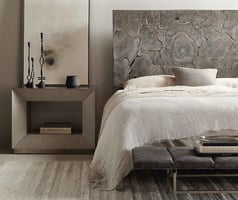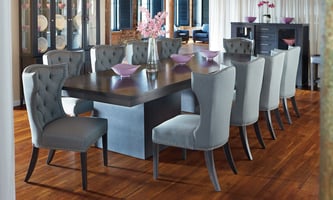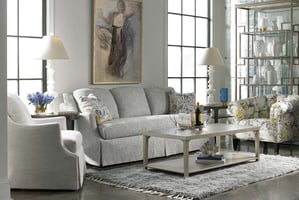Furnishing an entire room in your home calls for a little extra time to figure out your budget. And...
Motion Furniture (Pros, Cons, Misconceptions, and Alternatives)
Motion furniture allows you to instantly recline, put your feet up, swivel, and so much more! But is that really what you need in your home? How often will you lean back in your chair or feel the need to rock back and forth?
Our in-house designers at McElheran’s Furniture + Design are known as Design Guides. Our Design Guides have been working in the furniture and design industry for over 60 years combined and have certainly seen their share of motion furniture. And it’s really come into its own in recent years, merging comfort, functionality, versatility, and style.
But you know what? Motion furniture is not for everybody. Not everyone needs the ability to lean back in their seat or swivel at a moments notice. So, even if you decide not to go down the motion furniture path, at least you’re well on your way to seeing if it's the right fit for you.
In this article, one of our Design Guides, Teresa, will explain everything you need to know about motion furniture. The benefits, problems, misconceptions, and even alternatives if you’re interested in something else!
Let's get started with a quick and easy explanation so we know what we’re getting into here.
What is motion furniture?
Motion furniture is any type of furniture used for seating that has the ability to swivel, rock, recline, or push back. These movements occur with an internal mechanism that can be controlled manually or with power.
A recliner is probably one of the most obvious examples of motion furniture. And that reclining mechanism (whether it’s manual or powered) can be found in chairs, sectionals, and sofas.
Swivel and rocking chairs are also part of the motion furniture family.
What are the pros of motion furniture?
Versatility
Motion furniture is quite multi-functional and can bring a lot to your space by filling various needs. Looking at a reclining chair, for instance, you can sit up to converse with others, lean back to read, and completely lay down for a little nap (depending on the range of the recline).
And swivel chairs allow you to instantly point yourself at different focal points in the room and reposition yourself as needed.
Oh, and of course, you can do anything in motion furniture that you can do in “normal furniture,” too, like sit in an upright position.
Comfort
Who doesn’t love the option to lean back in your seat? It’s the next best thing to laying in bed! Motion furniture that’s built to recline allows you to do just that. And, particularly with power recliners, you can recline to the exact point that feels comfortable for you.
Depending on the piece, motion furniture allows you to elevate your legs, rotate to see something better, and even calmly rock yourself back and forth.
All-in-all, motion furniture gives you more options so you can find that perfect sitting (or laying) position.
Convenience
More of your needs can be met in a singular piece of motion furniture. Instead of going from a chair to a bed for your afternoon siesta, you can just recline back. Instead of purchasing an ottoman, you can simply use the mechanism in your furniture to elevate your legs. And instead of moving to a different seat, you can just swivel around to open yourself up to a different part of the room you’re in.
Motion furniture is extremely easy to operate, too. You can go from one position to another with a press of a button, pull of a lever, or just by shifting your weight.
What are the cons of motion furniture?
Design limitations
While the style of motion furniture has come a long way, there are still some limitations. The mechanism that allows for movement has to go somewhere, right? And because of that, you’re less likely to find sleek and compact-looking motion furniture. Not that it doesn’t exist – like these power reclining sofas from Incanto – but motion furniture does tend to sit a little bigger than non-motion pieces.
Rest assured, though, when it comes to upholstering your motion furniture, you pretty much have the same fabric and leather options as you would with any other type of furniture.
Takes up more space
Because of the different positions motion furniture can move in, it takes up more space. You have to be more aware of surrounding furniture, adjacent fixtures, and walls that could prevent your motion furniture from moving into certain positions.
The more moving parts are involved, the more you have to be conscious of its surroundings and how much space you’ll need for the flow of traffic.
For example, you may need to place your coffee table further away from your reclining sofa to allow the footrest to move up and down without hitting the table.
Safety hazard
This is not to say that motion furniture is dangerous, but it is important to be mindful of the potential issues that could arise.
When parts of the furniture move up, down, and around, there is a possibility that things could get caught in the mechanism. And as you redistribute your weight to allow for movement, there is a slight chance that the furniture could become unbalanced and tip over. That’s generally only going to happen with motion chairs, though, and only if these movements are done forcefully.
Also, if you have trouble getting in and out of your seat, a swivel chair may exacerbate the problem by creating an unstable target for your backside.
Misconceptions of motion furniture
The thing about motion furniture is that it’s not for everyone or every home. But there are some misconceptions out there – especially since motion furniture has really evolved to better suit our desire for comfort and style.
It’s outdated
TV shows like Friends or Frasier (remember Marty Crane’s hideous striped recliner with duct tape patching?!) put a bad taste in our mouths about motion furniture. Pop culture influences paired with the memory of those earlier, bulkier models of motion furniture gave these extremely functional pieces a bad reputation.
But motion furniture has come a long way! Designers and furniture manufacturers are more aesthetically minded, and as Teresa mentions, there’s been real attention put towards the design element of motion furniture to create a more updated look.
It breaks easily
There are a few additional components with motion furniture, right? There’s the mechanism itself, perhaps a power source, levers, and maybe a button or two. And, generally speaking, the more ‘stuff’ you have the more opportunity for things to go wrong.
And while that is true, when you’re purchasing a high-quality piece of motion furniture, the mechanism that allows for movement is well-built, tested, and almost always under warranty to ensure optimal performance.
It can’t go against a wall
With motion furniture, there’s a misconception that you can’t set those up close to a wall. But you can – as long as you find what’s known as a wall-hugger recliner. The mechanism of a wall hugger is a track instead of a hinge, so, as you lean back, the chair actually slides forward. This system allows you to place your reclining sofa, sectional, or chair within inches of the wall behind it.
While it is true that not all motion furniture can go up against a wall, wall huggers have offered a solution to that problem.
What’s an alternative to motion furniture?
If you love the idea of elevating your legs and relaxing a little more in your seat, but you’re not so into motion furniture, a chair and an ottoman are a great solution for you. Here, your seat is in a fixed position, but the ottoman gives you the option to put your feet up.
You could also try a chaise lounge. A chaise lounge is almost like a recliner in a permanently reclined position. If you know you’re going to spend most of your ‘me’ time leaning back in your seat anyway, a chaise lounge could definitely work for you.
What other types of multi-functional furniture are available?
As mentioned earlier, a huge benefit of motion furniture is that it serves many functions in your space. It can do everything non-motion furniture can do, plus swivel, recline, rock, and elevate your legs.
If you’ve fallen in love with the concept of getting more out of your furniture, check out What Is Multi-Functional Furniture to find out what other versatile pieces could go into your home.
And if you’re ready to have a closer look at motion furniture, drop by for a visit to McElheran’s! Our Design Guides would love to take you through the showroom to demonstrate what our motion furniture can do. But, of course, we’ll leave you alone to relax in a seat or two – because that’s really the best way to figure out if furniture is going to work for you.


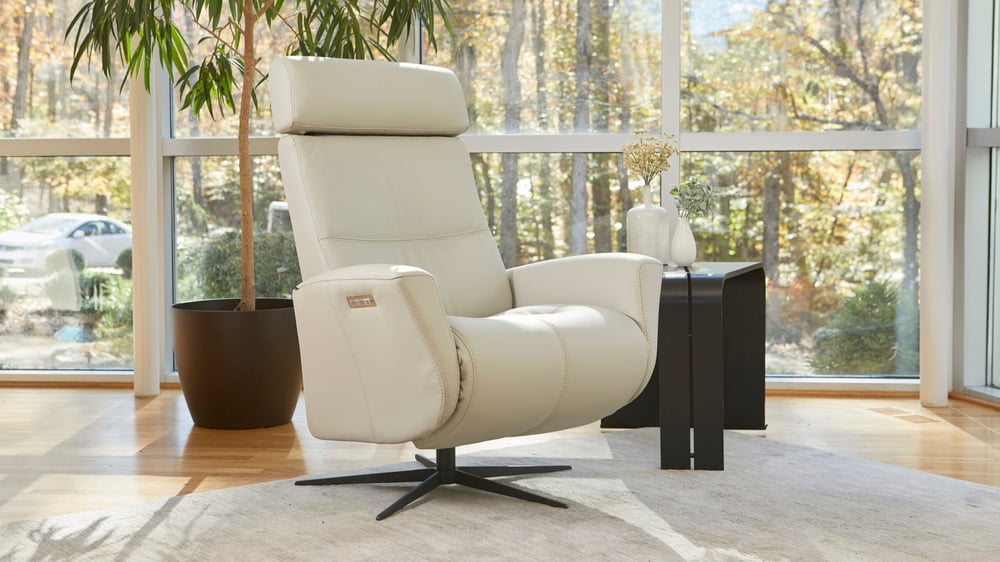
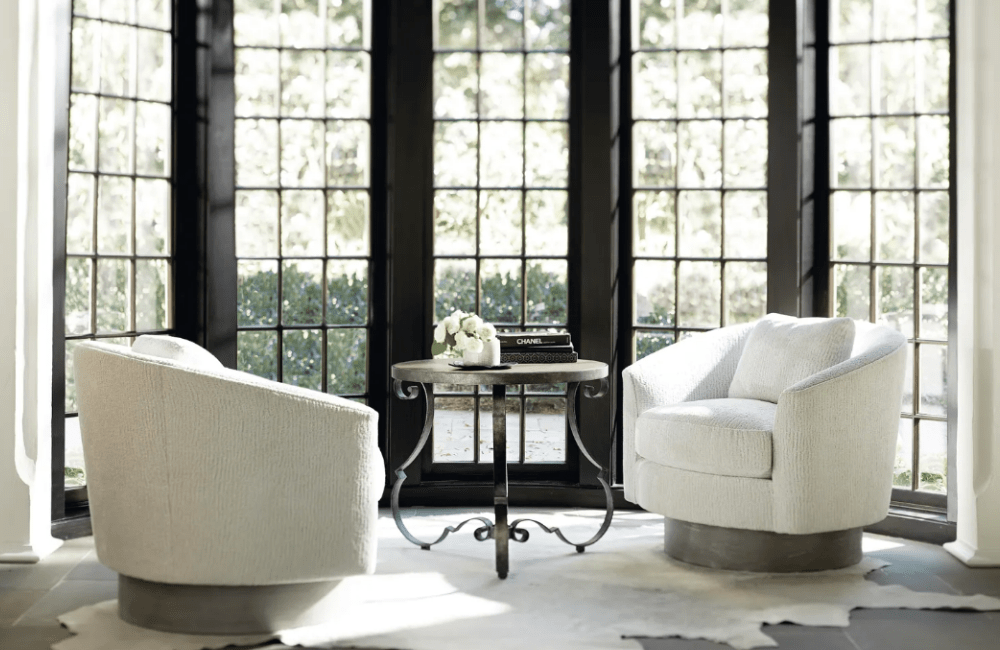
-min.png?width=1000&height=200&name=Swivel-motion(button)-min.png)
Recline-motion(button)-min.png?width=1000&height=200&name=(REV)Recline-motion(button)-min.png)

